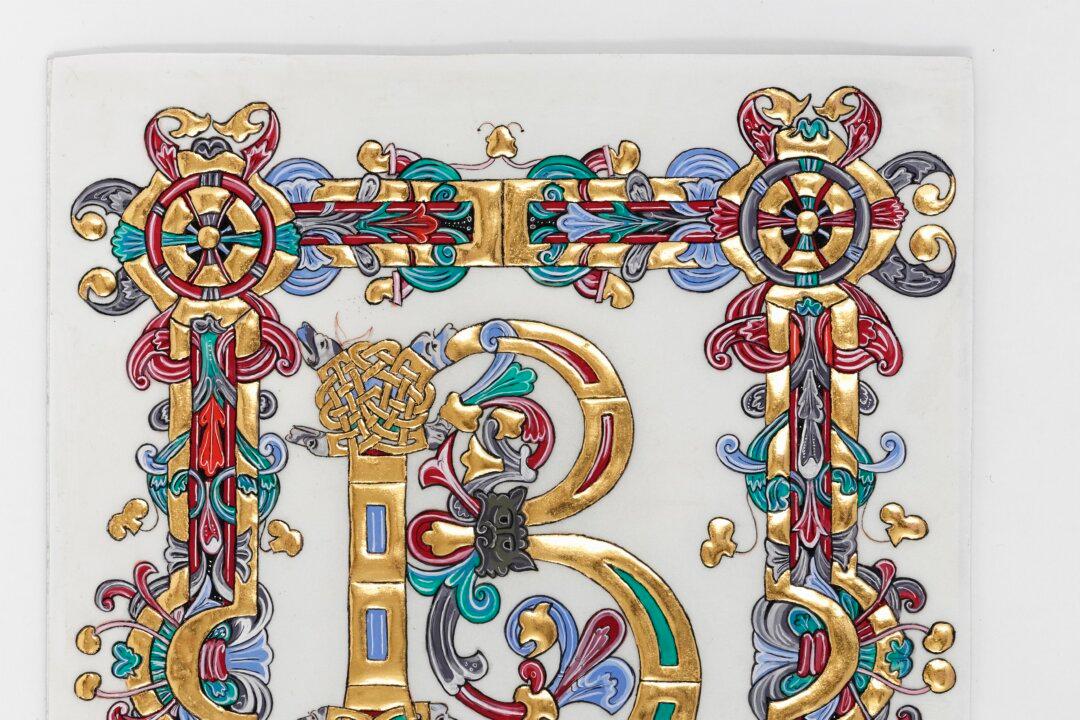Scribe Patricia Lovett writes calligraphy and paints illuminations at her home studio in Sevenoaks, Kent, England. But she originally learned the art of lettering out of frustration.
Lovett studied geography at the university she attended because she wanted to draw maps, then went on to work in business, and then taught in large inner London high schools, “often with quite difficult kids, and I loved it,” she said in a phone interview. All along, she drew lots of maps for publications but couldn’t do the lettering for the names, so out of sheer frustration, she decided to go off and learn how to letter.






